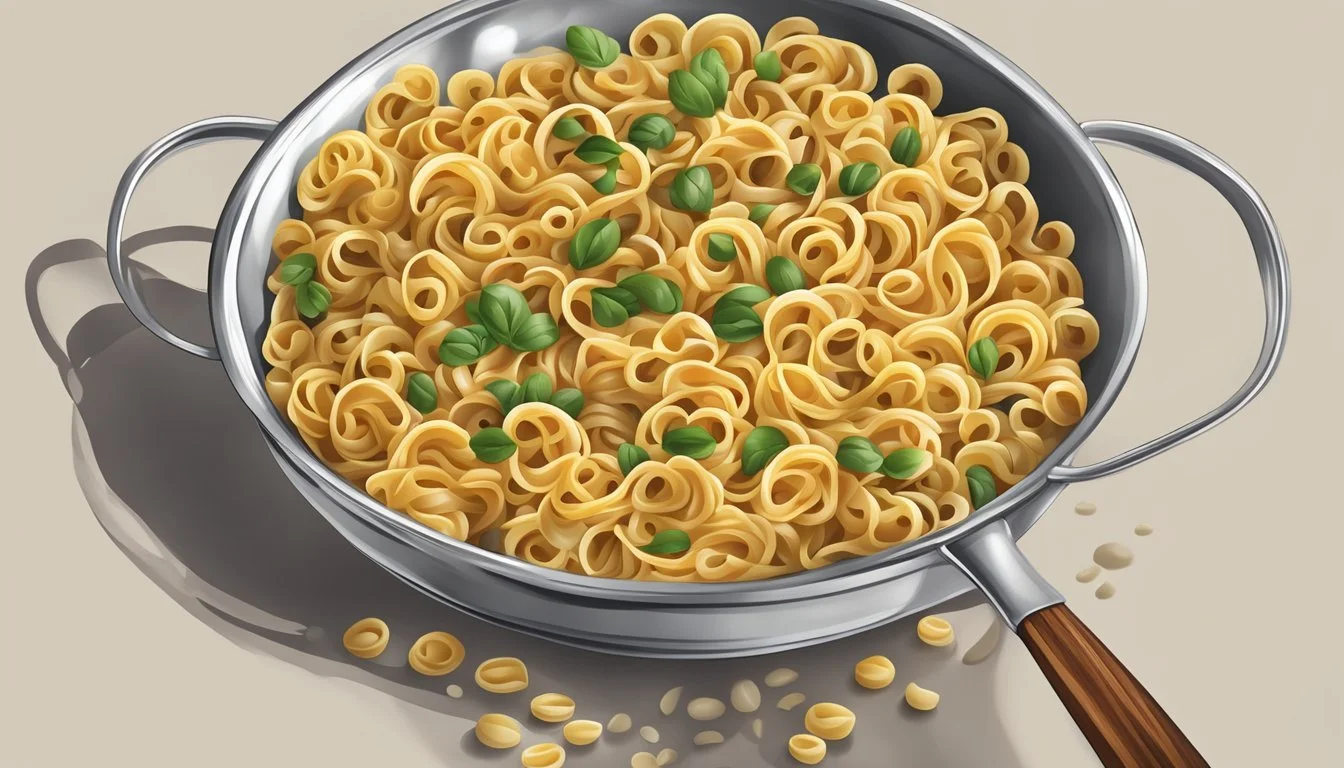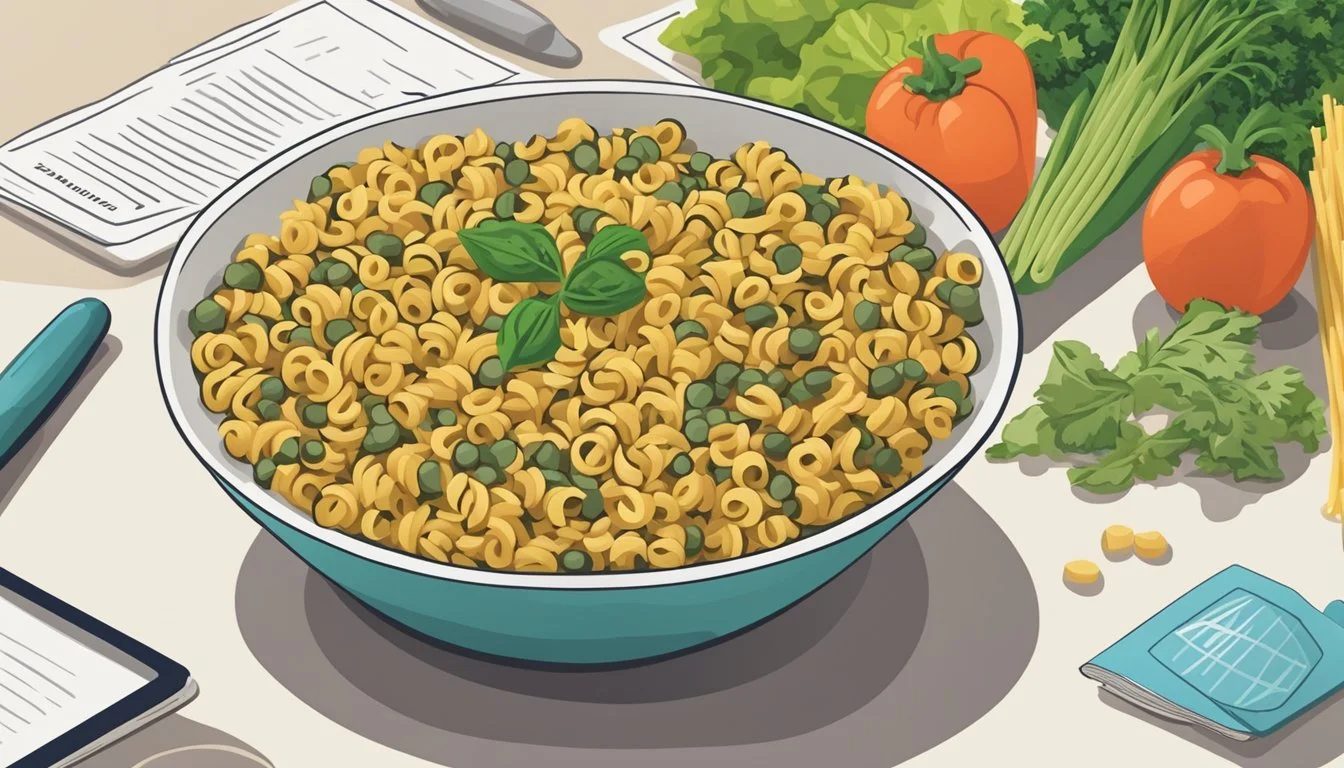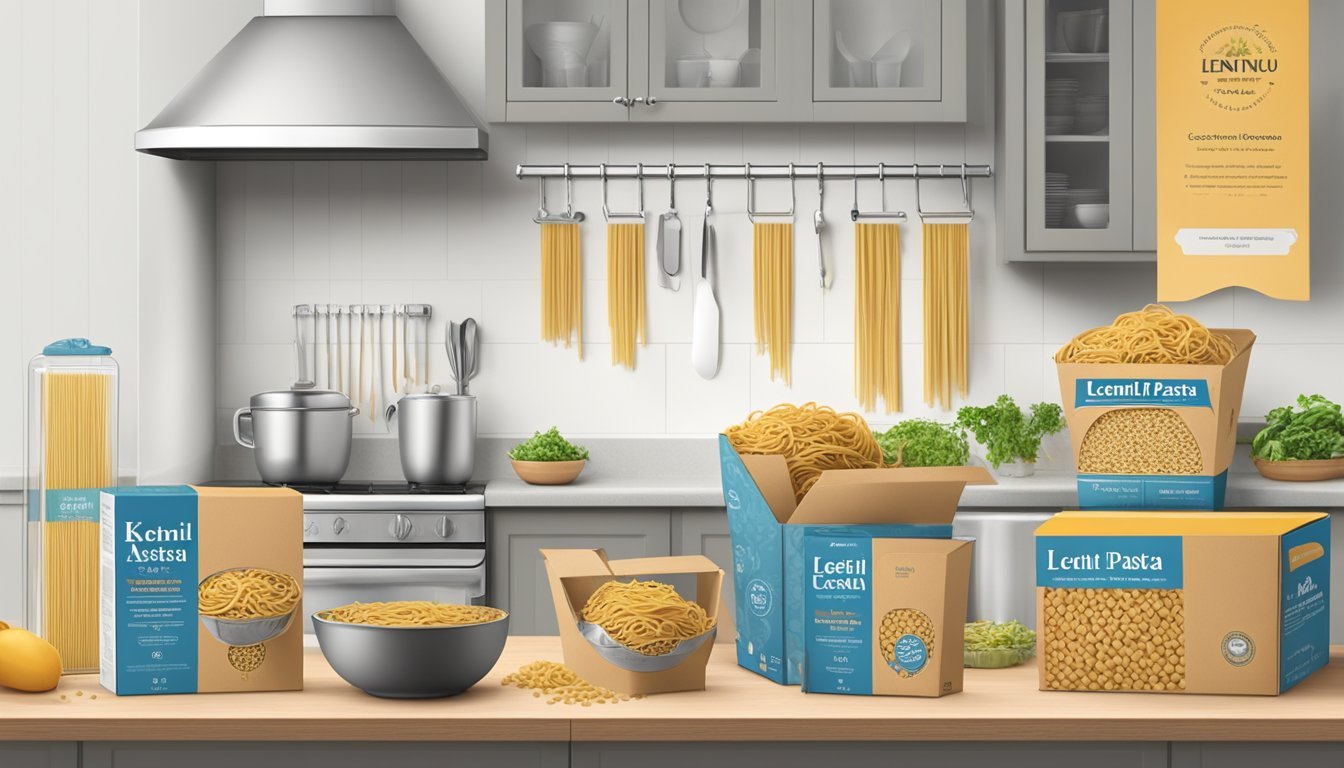How to Substitute Lentil Pasta for Regular Pasta
A Simple Swap Guide
In recent years, a growing number of health-conscious individuals have begun to explore alternatives to traditional pasta . Among these alternatives, lentil pasta has emerged as a prominent choice due to its nutritional advantages and versatility in various recipes. Lentil pasta (What wine goes well with pasta?) is made primarily from lentil flour, which offers a gluten-free option for those with dietary restrictions or preferences. Compared to regular pasta, which is made from wheat and contains gluten, lentil pasta provides an opportunity for people with gluten sensitivities to enjoy a pasta dish without the associated health concerns.
The transition from traditional to lentil pasta also introduces a notable difference in nutritional value. Lentil pasta generally boasts a higher protein and fiber content while providing fewer calories and carbohydrates per serving. This composition aligns well with health-oriented diets and can contribute to a feeling of fullness, supporting weight management and digestive health.
When substituting lentil pasta in recipes that traditionally call for wheat-based pasta, it’s important to consider the differences in texture and taste. Lentil pasta is known for holding its shape and avoiding mushiness after cooking, which can make it suitable for a wide range of pasta dishes. Whether incorporated into a warm, hearty bolognese or served cold in a refreshing pasta salad, lentil pasta can be a seamless substitute, offering a wholesome twist to classic meals.
Understanding Pasta Alternatives
When considering pasta alternatives, one should focus on both the variety of options available and their nutritional profiles. Alternative pastas offer a diverse range of flavors and health benefits, catering to various dietary needs.
Types of Alternative Pasta
Gluten-Free Pastas: These include pastas made from rice, corn, and quinoa. For example, Le Veneziane Corn Pasta is a gluten-free option that brings a subtle sweet flavor from its corn base.
Legume-Based Pastas: Pastas made from legumes like chickpeas or peas provide a high-protein, fiber-rich option. They also have a firmer texture that holds up well in cooking.
Grain-Based Pastas: Options like brown rice pasta offer whole-grain benefits and are often considered closer in texture to traditional wheat pasta.
Buckwheat Pasta: Notably, buckwheat noodles, such as soba, are another gluten-free choice with a nutty flavor.
Nutritional Comparisons
Traditional Pasta vs. Alternative Pasta (Per Serving)
Nutrient Traditional Pasta Chickpea Pasta Brown Rice Pasta Calories Approximately 200 Approximately 190 Approximately 210 Protein (g) 7 14 4 Dietary Fiber (g) 2 8 4 Gluten Present Gluten-Free Gluten-Free
Alternative pastas typically offer enhanced nutritional benefits compared to traditional pasta. For instance, chickpea pasta stands out with its high protein and fiber content. Brown rice pasta, while lower in protein, offers a gluten-free alternative with comparable calories to traditional wheat pasta. Gluten-free varieties like corn pasta provide options for those with gluten sensitivity or celiac disease, while still maintaining a pleasant taste and texture profile.
Health Benefits of Lentil Pasta
Lentil pasta has emerged as a nutritious alternative to regular pasta, offering distinct health advantages. It is especially beneficial for individuals with dietary restrictions or those seeking to enhance their nutrient intake. The following subsections detail its specific health attributes.
Protein Content
Lentil pasta stands out for its high protein content. A 2-ounce serving typically contains about 14 grams of protein, which is substantially more than the protein found in regular pasta. Protein is essential for muscle repair, immune function, and overall health.
Fiber and Nutrient Density
The fiber content in lentil pasta is impressively high, with 8-9 grams per serving, compared to just 2-3 grams in the same serving of regular pasta. It boasts a rich array of nutrients, including essential minerals like iron, potassium, zinc, magnesium, and vitamins. Lentil pasta also contains folate, a vitamin that is crucial for cell growth and metabolism.
Low Glycemic Impact
For those managing diabetes or type 2 diabetes, lentil pasta's low glycemic index is a significant benefit. It helps maintain blood sugar control, thanks to its low-carbohydrate profile and high fiber and protein content, which slow the release of glucose into the bloodstream.
Gluten-Free Properties
Lentil pasta is naturally gluten-free, making it an ideal choice for people with celiac disease or gluten intolerance. It offers a means to enjoy a pasta-like dish without the adverse effects of gluten on their digestive health.
Cooking with Lentil Pasta
Lentil pasta offers a healthful twist on traditional pasta with its higher protein content and complex carbohydrates. When cooking lentil pasta, one should consider preparation methods, cooking times, and techniques to ensure the pasta’s texture remains appealing.
Preparing for Cooking
Before cooking lentil pasta, one should ensure that all necessary ingredients are ready. This includes measuring the amount of pasta and water needed. For every 100 grams of lentil pasta, typically 1 litre of water is used. The water should be brought to a rapid boil prior to adding the pasta to prevent sticking and to cook the pasta evenly.
Cooking Times and Techniques
Lentil pasta usually has a shorter cooking time than regular wheat-based pasta. Depending on the brand and shape, it can take anywhere from 6 to 10 minutes to reach an al dente texture. It's important to stir the pasta occasionally during cooking to prevent it from clumping together. Additionally, as overcooking can lead to a mushy texture, one should start taste-testing a couple of minutes before the lower end of the recommended cooking range.
Achieving the Perfect Texture
To achieve the perfect al dente texture, swiftly remove the pasta from heat and drain it as soon as it reaches the desired firmness. Unlike some regular pastas, rinsing lentil pasta is often recommended to remove excess starch which can cause bloating or affect digestion. Furthermore, rinsing with cool water stops the cooking process immediately and can help maintain a desirable texture. Remember that the pasta will continue to soften slightly after being drained, so timing is crucial to avoid overcooking.
Substituting Lentil Pasta in Recipes
Substituting lentil pasta for regular pasta can enhance the nutritional profile of a dish, especially in terms of fiber and protein content. This section will guide readers through making successful substitutions considering taste, texture, and portions, as well as how to harmonize lentil pasta with various sauces and ingredients.
Adjusting for Taste and Texture
Lentil pasta has a more pronounced, earthy flavor compared to traditional wheat pasta. To ensure that dishes maintain a balanced taste profile, consider reducing stronger flavors in the recipe that might overpower the pasta. The texture of lentil pasta is also different—it can be firmer and less doughy. To achieve the desired al dente texture, it may require a shorter cooking time, often simmered just until it's tender.
Taste adjustments: Use milder types of cheese, such as ricotta or mozzarella, and aromatic herbs like basil or oregano to complement the nutty flavor of the pasta.
Texture management: Cook lentil pasta in ample boiling water and check for doneness frequently to prevent overcooking.
Portion Considerations
Lentil pasta is denser and more filling than its wheat-based counterpart due to its higher protein and fiber content. Portions may need adjustment to account for its satiating nature.
Typical portion sizes:
Pasta Type Serving Size Wheat Pasta 2 oz (56 g) Lentil Pasta 1.5 oz (42 g)
Keep in mind that lentil pasta expands less upon cooking, so a smaller portion will be satisfying and keep carbohydrate intake in check.
Pairing with Sauces and Ingredients
Lentil pasta pairs exceptionally well with robust sauces and a variety of ingredients. To allow the pasta to shine in a dish, lighter, less complex sauces tend to work best.
Suitable sauce and ingredient pairings include:
Sauces: Olive oil-based dressings, light tomato-based sauces, or a delicate pesto.
Vegetables: Spinach, tomatoes, or roasted vegetables enhance both the taste and nutritional value.
Proteins: Consider sausage or grilled chicken; the savory flavors complement the natural taste of lentil pasta well.
Aromatics: Garlic, onions, and shallots add depth without being overpowering.
Cheese: Given lentil pasta's flavor profile, lighter cheeses like parmesan or feta make for an excellent topping.
Dietary and Nutritional Considerations
When substituting lentil pasta for regular pasta, it is important to consider the varying dietary impacts such as caloric content, carbohydrate composition, and suitability for various food sensitivities.
Weight Management and Calories
Lentil pasta, due to its lower calorie and higher protein content, can be a favorable option for those involved in weight management. A 2 oz serving of red lentil pasta typically has around 180 calories, whereas the same serving of regular pasta may contain about 200 calories. This calorie reduction, along with higher protein, can contribute to a feeling of fullness and help with portion control.
Blood Sugar and Carbohydrate Management
Substituting regular pasta with lentil pasta may be beneficial for individuals monitoring blood sugar levels, such as those with diabetes. The carbohydrate content in red lentil pasta, 32 grams per 2 oz serving, is lower compared to regular pasta's 42 grams for the same amount. Moreover, lentil pasta typically has a lower glycemic index, which may result in less of a blood sugar spike post-meal.
Managing Food Sensitivities
Lentil pasta is inherently gluten-free, making it an excellent choice for those with celiac disease or gluten sensitivity. Additionally, its suitability for vegan and vegetarian diets adds to its appeal for individuals with specific dietary restrictions. Lentil pasta also generally lacks the additives found in some regular pastas, further reducing the likelihood of triggering food sensitivities.
Shopping for Lentil Pasta
When selecting lentil pasta, shoppers should consider its availability in local grocery stores and health food stores, as well as online purchase options. Lentil pasta not only provides a gluten-free alternative to regular pasta but also a nutritious option rich in fiber.
Finding Lentil Pasta in Stores
In most grocery stores, one can find lentil pasta located in the pasta aisle or the gluten-free section. Lentil pasta comes in various shapes, such as penne, fusilli, and rotini, catering to diverse culinary preferences. Shoppers should look for labels indicating "Lentil Pasta," and it's wise to check the ingredient list to ensure the product is made predominantly from lentils. Health food stores also carry a broader selection of alternative pastas, including those made from lentils.
To Locate Lentil Pasta, Consider:
Grocery Stores: Scan the regular pasta aisle and the specialized gluten-free section.
Health Food Stores: Explore for a wider variety of lentil pasta brands and types.
Online Purchase Options
For convenience, many shoppers opt to purchase lentil pasta online. Amazon is among the most popular platforms where a vast assortment of lentil pasta is available, offering various brands and price points. Online health food retailers also provide a selection of lentil pasta, often including organic and non-GMO options.
Key Online Platforms:
Amazon: An extensive range of lentil pasta offerings with user reviews for guidance.
Health Food Retailers: Specialized selections for those seeking organic and specialty products.
Creative Uses for Lentil Pasta
Lentil pasta, high in protein and fiber, serves as a nutritious alternative to traditional pasta. Its unique texture and flavor can enhance a variety of dishes, offering a healthier twist on classic recipes and inspiring innovation in the kitchen.
Innovative Recipe Ideas
When exploring recipes suitable for lentil pasta, one might consider high-protein entrees that complement the pasta's nutritional profile. For example:
Italian Twist: An instant pot can be used to create a one-pot lentil pasta dish by incorporating vegetables like spinach or zucchini, and a rich, homemade tomato sauce that adheres well to the pasta's surface.
Global Flavors: A lentil pasta stir-fry can feature a diversity of vegetables such as bell peppers and carrots, combined with a savory soy or teriyaki sauce, weaving the themes of health and flavor into each bite.
Over time, cooks have discovered that lentil pasta can be substituted seamlessly into many favorite pasta recipes due to its versatility.
Lentil Pasta Beyond Traditional Dishes
Lentil pasta's adaptive nature allows it to cross traditional culinary borders:
Stuffed Pasta Alternatives: One could use lentil pasta as a filling base in stuffed peppers or tomatoes, offering a well-rounded, fiber-rich meal option.
Creative Casseroles: By layering lentil pasta with other alternative pastas like spaghetti squash or buckwheat noodles, chefs can create casseroles that are multi-textured and nutritionally dense.
These dishes showcase lentil pasta's ability to both stand out as the main component and integrate seamlessly into an array of innovative and health-conscious recipes.
Environmental and Ethical Considerations
Choosing lentil pasta over regular pasta can have significant environmental and ethical benefits. This section explores how sustainable farming practices are associated with lentil production and the economic impact it entails.
Sustainable Farming Practices
Lentils are part of the legume family, known for their ability to fix nitrogen into the soil, which reduces the need for synthetic fertilizers. This trait makes lentils an environmentally friendly crop that supports sustainable farming practices. They require less water than durum wheat—the primary ingredient for semolina in traditional pasta—and are ideal for dry climates.
The cultivation of lentils also contributes to crop diversity, a key factor in ecological agriculture. Unlike monocultures that deplete the soil and increase the risk of pests and diseases, diverse crop rotations that include lentils enhance soil health and mitigate against such risks.
Economic Impact of Lentil Production
The production of lentils has a positive ripple effect on the economy, particularly in regions where lentils thrive. For farmers, lentils provide a valuable crop that is both hardy and beneficial for subsequent plantings in a crop rotation, thereby potentially increasing overall farm profitability.
Moreover, legume crops, like lentils, often require less processing compared to conventional whole wheat pasta, which can translate into reduced energy costs and a lower carbon footprint. The increased popularity of alternative pastas, including lentil pasta, may stimulate market demand, encouraging investment into more sustainable processing methods and local economies.
Tips and Tricks for Lentil Pasta
Preparing lentil pasta can be straightforward, but certain measures can enhance the cooking process and final dish. Proper technique ensures the desired texture, while ample storage maintains freshness.
Preventing Common Cooking Mistakes
Cooking Time:
Lentil pasta often has a shorter cooking time compared to traditional pasta. It is important to achieve an al dente texture, where the pasta is tender but still firm to the bite. One should monitor the pasta closely and taste test a piece around the 7 to 9-minute mark.
Portion Control:
When cooking lentil pasta, start by using a smaller portion size than you might with wheat-based pasta. Lentil pasta can be quite filling, so adjust portions to fit dietary needs and preferences.
Rinsing Techniques:
To prevent a mushy outcome, thoroughly rinse lentil pasta with cold water immediately after cooking. This halts the cooking process and washes away excess starches.
Avoiding Gas:
Some people find that lentil pasta can lead to gastrointestinal discomfort due to the high fiber content. To minimize the potential for gas, consider combining lentil pasta with digestive herbs or spices that are known to reduce bloating.
Storage and Freshness
Dry Lentil Pasta:
Store in an airtight container in a cool, dry place. It should not be exposed to moisture or extreme temperatures to maintain its earthy flavor and firm texture.Fresh or Cooked Pasta:
Refrigeration: Seal in an airtight container and refrigerate for up to 3 days.
Freezing: For longer storage, one can freeze lentil pasta. Place portions in freezer bags or containers, separating layers with parchment paper to prevent sticking.
Using Lentil Flour:
When making homemade lentil pasta, using lentil flour can enhance the nutrient profile. Dust the pasta with additional lentil flour to prevent sticking during storage.
By properly cooking and storing lentil pasta, chefs ensure that the earthy, robust flavors are preserved and that the pasta retains its ideal texture for a satisfying meal.





